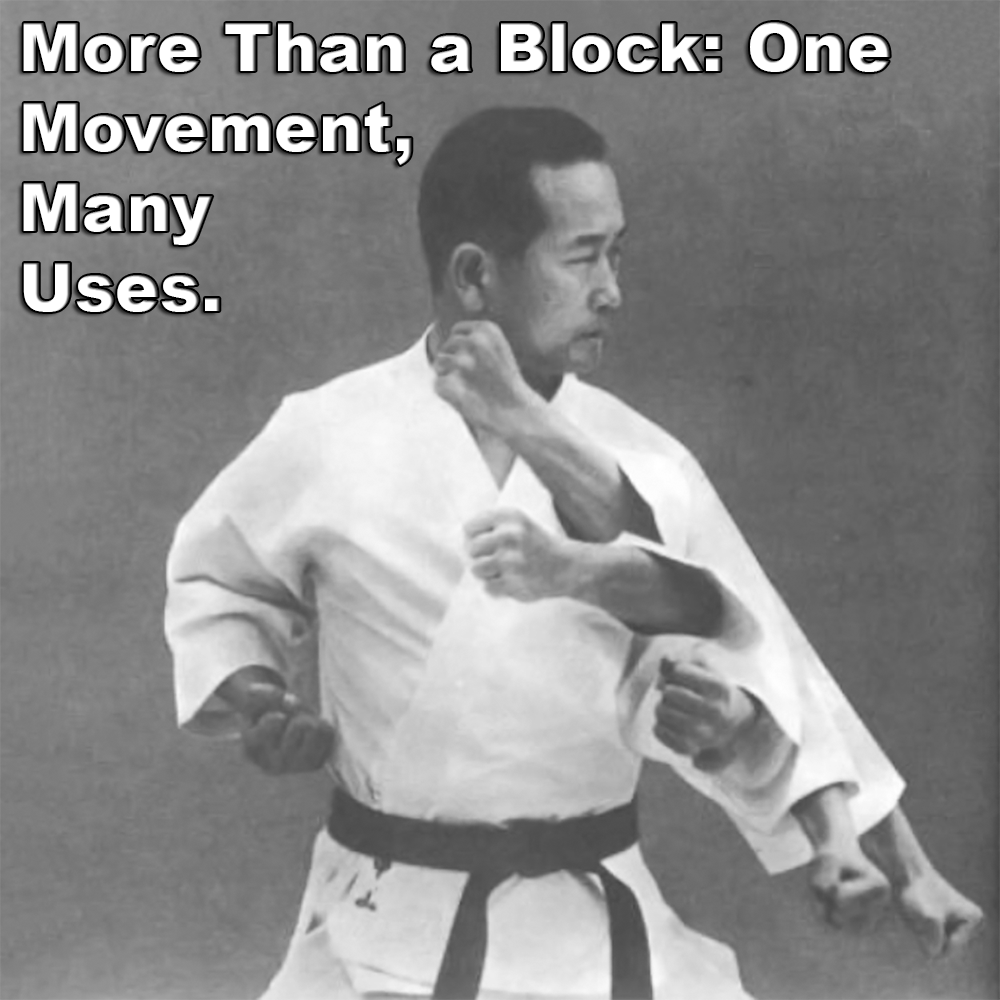
(Approx 3 minute read)
A friend of mine recently posted an image of a downward block, or gedan barai, to show it could do something most people never expect: in this case, a throw.
.
For clarity, he placed text alongside the image that said, ‘Gedan Barai is not a block’. Oh crikey, I know where this is going.
.
Now, I agree, gedan barai is not simply a block, but many people reading his page went ape and threw out some wild comments.
.
One of them that caught my eye was: ‘Looks very similar and could be the exact same but things have names and definitions for a reason and saying one is the other is just not true. Similar sure but not the same.’
.
He went on to say, ‘The technique here is trying to show a block is a throw. Which is literally a different technique… we define things for a reason. Because if I had you do a downward block for 5 years and then told you to do this throw you would be very confused… But once an opponent is in front of you, you would have to adjust so many small details of the technique you would realize how different it actually is.’
.
I have a problem with this attitude and approach to karate. What he is basically saying is that every technique, must have its own name. And as we know, in the martial arts today, they do.
.
My problem with this, and it should be for anyone with an interest in pragmatic karate, is that we now have hundreds of techniques that we must follow to the letter because each one has its own name and its own function.
.
He mentioned studying a downward block for five years, saying you would be confused if you had to use it as a throw. Well, yes, of course you would. That’s not the student’s fault, it’s the teacher’s. But why would you teach a gedan barai for five years simply as a block? It doesn’t make sense. It is poor teaching and poor understanding.
.
Some people need to realize that the names of techniques were added after karate’s change from pragmatic to modern in the early part of the 20th century. These names were added for ease of teaching groups of students within a school and university setting. Any relation to actual physical combat was removed.
.
If I wanted to be a little pedantic, ‘gedan barai’ doesn’t even mean block. It means lower sweeping. And even if you add ‘uke’ to it, gedan barai uke, it simply means receiving by sweeping at the lower level. So even in the modern sense, that alone opens it up to far more than a single fixed function.
.
Now go back to when the pioneers were putting this all together and the names didn’t exist. From this, we understand that the techniques were regarded as movements, not isolated actions, but adaptable. Do you see where I am going with this?
.
If you were involved in a real, brutal non-consensual fight, do you think you would have time, do you think your brain would allow you to recall hundreds of techniques so you could choose the exact one you need? No, of course not.
.
You use movement and adapt that movement. Suddenly, one technique has become many. It is easier to recall under extreme stress, and easier to use when the adrenaline dump hits.
.
And this is the problem with modern karate. Trying to use a method that was not designed for practicality and real combat, trying to make it fit. It won’t. Context is everything (here I go again).
.
It’s like trying to recall every word in a book. It would take too long, when all you need to do is check the summary.
.
And that is the point most people miss. When you strip away the labels, the fixed shapes, the insistence that every movement must live in its own little box, you are left with what the old masters actually built – function. Not a catalogue of techniques, but a vocabulary of movements.
.
Once you understand that, the whole argument about whether a gedan barai can also be a throw becomes irrelevant. Of course it can. It always could.
.
The only people who struggle with that idea are those still trying to memorize the book instead of learning the language.
.
.
Written by Adam Carter – Shuri Dojo
